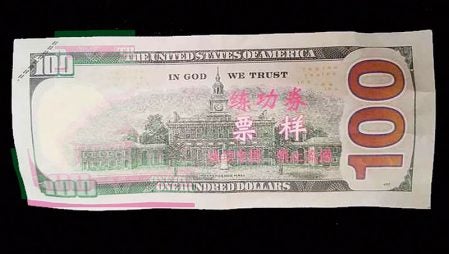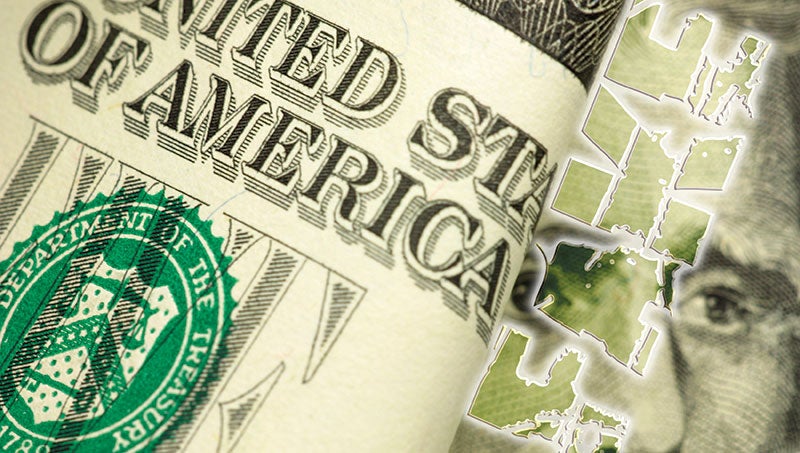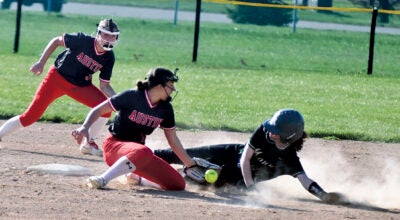Counterfeit currency: A consistent crime
Published 7:00 am Tuesday, June 18, 2019
With over $1.3 million in counterfeit currency making its way into Minnesota’s economy in 2018, law enforcement is encouraging vigilance among those engaging in transactions.
According to Austin Police Chief David McKichan, the use of counterfeit currency in transactions is a consistent crime, with the APD getting an average of at least one report per month, though sometimes as many as 17 times per year.
“There are different versions of bills we’ve seen, but it’s a consistent crime that we continue to deal with,” he said.

Austin Police Chief David McKichan
According to McKichan, $595 in counterfeit currency has been reported to the APD so far this year. Last year, $1,335 was reported in Austin. Statewide, approximately $1.386 million in counterfeit currency was reported in 2018, while about $444,00 has been reported so far in 2019.
“When you think of all of the transactions done on a day-to-day basis, this is not a substantial portion, but all of those things add up,” McKichan said. “If you’re a retailer, given your margins, that counterfeit $100 is a significant dent in what you were going to do that day and it does cause a lot of harm.”
In the event law enforcement gets a counterfeit currency report, McKichan said the Austin Area Chamber of Commerce is notified.
But not all counterfeit currency is caught by the recipient.
“Criminals take advantage of the fact that we’re in a hurry,” McKichan said. “In a retail environment, where clerks are doing 100 plus transactions a day and people are in and out, criminals are looking to take advantage and introduce a bill that looks very similar into the transaction process with the hope that whomever is involved is not going to take the time to pick up on it. Our money is very safe and secure; it has a lot that goes into making it safe and secure. But, if I give you five $20 bills in a transaction and one of them is not real, but it all looks close enough that you accept it pretty quickly and move on, then once it’s in the till, it’s very hard for us to figure out who it came from.”
In the most recent report of counterfeit currency made to the APD, an individual attempted to use a fake $100 bill to purchase $10 worth of gas on May 28 at an Austin Kwik Trip location. In that case, the clerk saw the note was fake because of the presence of Asian-style markings on the back of the bill. Similar bills have been reported in the past with distinctive markings on both sides. Bills like this are sometimes marketed as “movie money” and can be purchased online.
“Just because it is online doesn’t mean it is okay or legal,” McKichan said. “Those bills may not meet what is federally acceptable as ‘movie money’ and that is part of the problem. The mere fact that you can get it online does not make it legal and I would caution people against it – do not order this stuff, do not have it around or get involved with it because it does begin to get out, circulate and cause problems for private transactions and for local retailers.”

Austin Police are reporting an emergence of counterfeit bills in the community, according to an email warning sent by the Austin Area Chamber of Commerce. Counterfeit bills look and feel like real currency, but lack certain security details. Photo provided
McKichan said the best way to prevent people from being victimized by counterfeit currency is to educate them on what to look for.
“A lot of it is prevention on the front end,” he said. “Not only does law enforcement have a vested interest in the prevention of (counterfeit currency), all of these retail outlets do as well. Most are giving employees some sort of training on what bills look like, what security features there are, and what to do if you have a question.”
McKichan’s main advice for retail establishments on helping spot counterfeit currency: slow down.
“Take the time to look at the bills you’re receiving,” he said. “Retail establishments will have different policies on (counterfeit money), but if you see someone that is attempting to use it, we would appreciate if you give us a call, but we don’t want retailers to put themselves or their employees in harm’s way. Don’t get into a fight over the counterfeit bill. You don’t have a legal obligation to return it to them, but don’t hold onto it at the expense of your safety. If that person wants to get that bill back, let that person walk out, give us a call and let us investigate it.”
McKichan added that anyone who comes across counterfeit currency may contact law enforcement or a banking institution for proper disposal. They can also assist in determining authenticity.
More information can be found at www.uscurrency.gov.
How to spot a fake
The government has placed several security features on U.S. paper currency as a means of distinguishing real currency from counterfeit. If you are unsure about whether or not a bill is real, look for the following features. If you are still unsure about the bill’s authenticity, contact local law enforcement or your financial institution. For more information, visit www.uscurrency.gov.
$5 Bill
• Watermark – Hold the note to light and look for a faint image of three numeral 5s to the left of Abraham Lincoln’s portrait. The image is visible from both sides of the note. A second watermark that denotes a faint image of a large numeral 5 located in the blank space on the front right side of the note can also be spotted when held to the light. It is also visible on both sides of the note.
• Security Thread – Hold the note to light to see an embedded thread running vertically to the right of the portrait. The thread is imprinted with the letters “USA” and the numeral 5 in an alternating pattern and is visible from both sides of the note. The thread glows blue when illuminated by ultraviolet light.
$10 Bill
• Watermark – Hold the note to light and look for a faint image of Alexander Hamilton in the blank space to the right of the Hamilton’s portrait. The image is visible from both sides of the note.
• Security Thread – Hold the note to light to see an embedded thread running vertically to the right of Hamilton’s portrait. The thread is imprinted with the text “USA TEN” and a small flag in an alternating pattern and is visible from both sides of the note. The thread glows orange when illuminated by ultraviolet light.
• Color-Shifting Ink – Tilt the note to see the numeral 10 in the lower right corner of the front of the note shift from copper to green.
$20 Bill
• Watermark – Hold the note to light and look for a faint image of Andrew Jackson in the blank space to the right of Jackson’s portrait. The image is visible from both sides of the note.
• Security Thread – Hold the note to light to see an embedded thread running vertically to the left of Jackson’s portrait. The thread is imprinted with the text “USA TWENTY” and a small flag in an alternating pattern and is visible from both sides of the note. The thread glows green when illuminated by ultraviolet light.
• Color-Shifting Ink – Tilt the note to see the numeral 20 in the lower right corner of the front of the note shift from copper to green.
$50 Bill
• Watermark – Hold the note to light and look for a faint image of Ulysses S. Grant in the blank space to the right of Grant’s portrait. The image is visible from both sides of the note.
• Security Thread – Hold the note to light to see an embedded thread running vertically to the right of Grant’s portrait. The thread is imprinted with the text “USA 50” and a small flag in an alternating pattern and is visible from both sides of the note. The thread glows yellow when illuminated by ultraviolet light.
• Color-Shifting Ink – Tilt the note to see the numeral 50 in the lower right corner of the front of the note shift from copper to green.
$100 Bill
• Watermark – Hold the note to light and look for a faint image of Benjamin Franklin in the blank space to the right of Franklin’s portrait. The image is visible from both sides of the note.
• Security Thread – Hold the note to light to see an embedded thread running vertically to the left of Franklin’s portrait. The thread is imprinted with the letters “USA” and the numeral 100 in an alternating pattern and is visible from both sides of the note. The thread glows pink when illuminated by ultraviolet light.
• Color-Shifting Ink – Tilt the note to see the numeral 100 in the lower right corner of the front of the note shift from copper to green.
• 3-D Security Ribbon – Tilt the note back and forth while focusing on the blue ribbon. You will see the bells change to 100s as they move. When you tilt the note back and forth, the bells and 100s move side to side. If you tilt it side to side, they move up and down. The ribbon is woven into the paper, not printed on it.
• Bell in the Inkwell – Tilt the note to see the color-shifting bell in the copper inkwell change from copper to green, an effect that makes the bell seem to appear and disappear within the inkwell.



